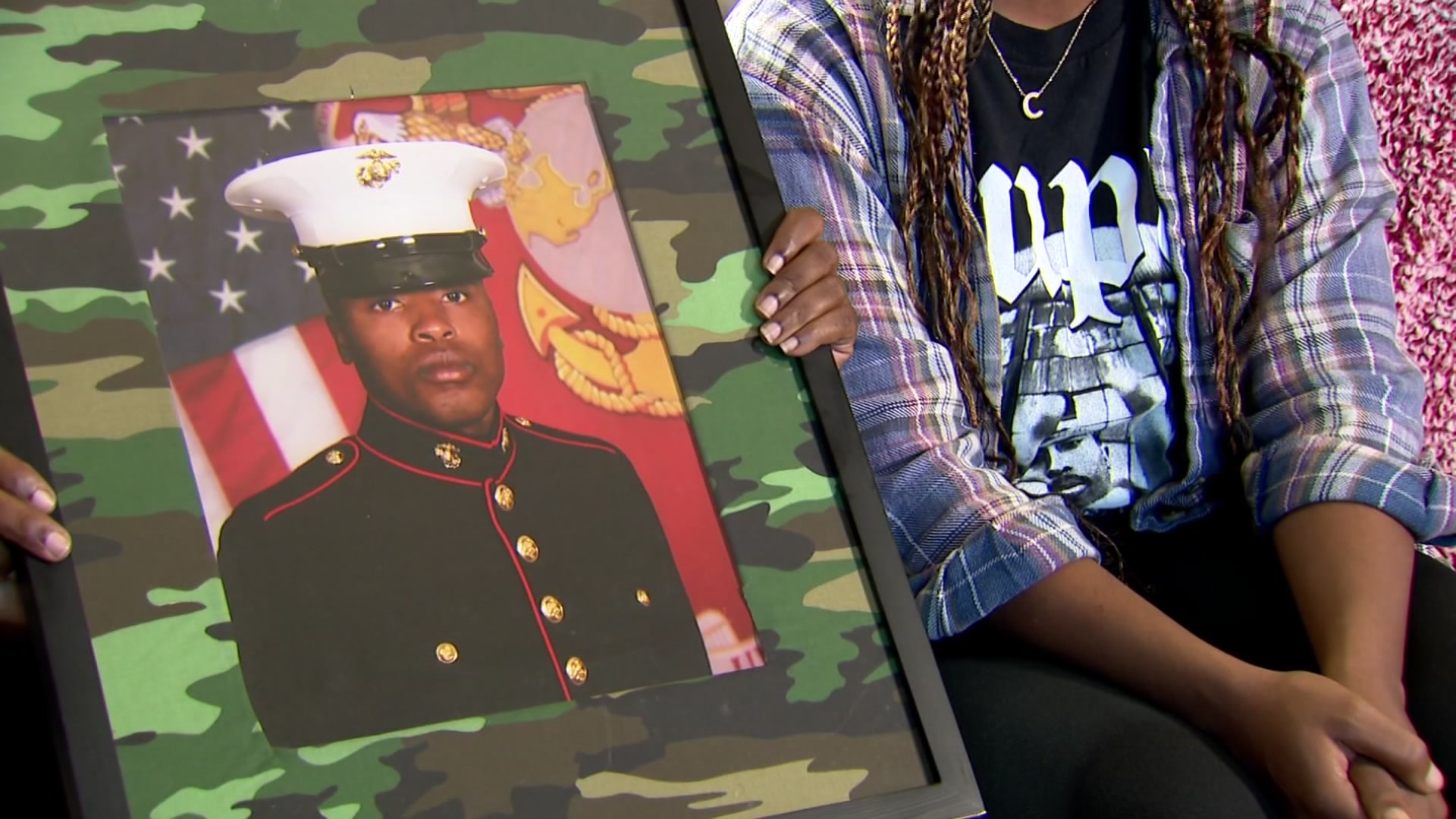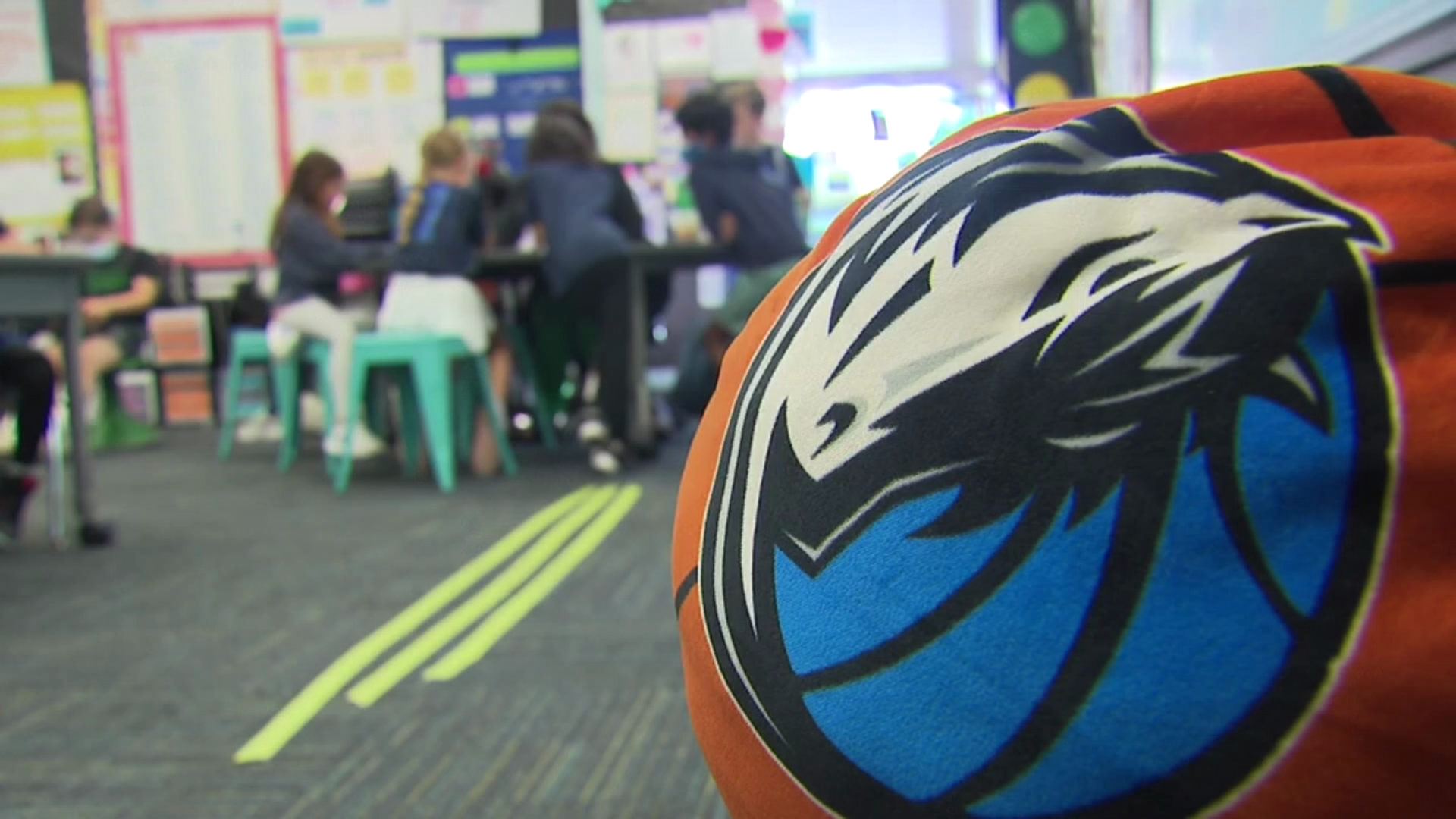West Virginia freshman Leddie Brown takes an inside handoff, puts his head down and lunges forward. The on-field official signals touchdown as the running back falls into the end zone with the ball cradled in his right arm.
While Mountaineers players and fans celebrate, officials in the replay booth at the stadium in Morgantown and at the Big 12's Replay Operations Center in suburban Dallas are already simultaneously reviewing the play -- like they do every score, and just about everything else, at home games for conference teams.
"I'd stop it. I think he's going to be short," David Warden, the Big 12's replay coordinator sitting in Texas, says through a headset that connects him to the replay official at the stadium and another in the same room with him who is assigned to that game. Referee Eddy Shelton will soon join the conversation from the field some 1,200 miles away.
This is the second season of the Big 12's centralized replay system, and during a recent midweek game, The Associated Press was one of three media outlets allowed in the 1,000-square-foot room filled with monitors and nearly two miles of wiring and cables to see how the operation works.
On game days, Warden sits at a station in the back of the room, along with Big 12 coordinator of football officials Greg Burks, with four monitors directly in front of them. There are six similar stations in the room, split over three rows, where two people work each individual game. Four huge television monitors hang on the wall, with the sound turned off so not to be influenced by anything being said.
Burks and Warden, who on Saturdays usually have multiple games going on the same time, observe and make final decisions when reviews are needed. Burks said they don't need to get involved on nine out of 10 calls, with most decisions made by the replay staffs at the stadium in collaboration with those in Texas working that particular game.
"Every time we send a replay crew into a stadium, each one of those people are different, just by nature," Burks said. "By having centralized replay and ultimately a couple of decision-makers, we're hoping, and the thought is, is that we'll be more consistent, and that those 50-50 plays will be called the same regardless of who's playing and where."
Local
The latest news from around North Texas.
The ACC, SEC and Pac-12 also have a centralized replay system. The Big Ten is the only Power Five conference without one.
Big Ten spokesman Adam Augustine said the league's experimentation with centralized replay during the 2016 and 2017 seasons "revealed that the number of calls that might be overturned by a third level of review was very small, creating too much potential pain for too little gain while raising issues of substance and perception."
Pac-12 athletic directors last week approved changes to its replay review system , including the development of a manual with clear protocols and procedures, after a league executive influenced a potential targeting call during a game in September.
"Our job is just to try and prevent us from doing something incorrectly. That's all we're trying to do," said Burks, the Big 12 official. "So it's still a working process in some degree, how fast do we jump in, how do we look at each play?"
Most times for the Big 12, it's a quick confirmation without any stoppage -- such as a "We're good" from Warden after WVU scored on a 53-yard pass less than a minute into the game, and on Baylor's lost fumble to start the second half. But on Brown's play in the third quarter, replay officials quickly see something during their standard review.
When Shelton is notified by the stadium crew about the need for a review, the referee goes to a portable on-field monitor and sees what Warden and the replay officials have already looked at -- a freeze-frame shot clearly showing Brown's left elbow on the ground with the ball short of the end zone. The ref can also talk with them.
"I'd put him about a foot from the goal line," Warden said, and about 1 minute, 13 seconds after the review began, Shelton announces to the crowd and national TV audience that "the runner was short of the goal line. It'll be second down."
While monitoring games, Burks also takes notes for his grading of the on-field officials and the replay crews. He noted that a penalty was enforced from the wrong spot in the first half of the Baylor-West Virginia game.
"One of the dilemmas with replay is when it started the idea was it was to fix major errors," Burks said. "And now where have we gone with this, to the point where I think the expectation is that we're supposed to make the game perfect."
The Big 12 spent about $1 million to convert an old office suite in a building away from its headquarters into its Replay Operations Center -- or "ROC" -- where program feeds from games are displayed in real time.
The six work stations for games in the ROC are nearly identical to what the replay crews have in each Big 12 press box. The exception is the extra monitor in the replay center that shows what is being viewed at the stadium, where the replay official can zoom in on a play or view up to four angles simultaneously on the same screen.
With a crew of four in the stadium's replay booth -- the replay official, two technicians and a communicator -- along with another replay official and tech in the ROC, that's six people assigned to each game.
Oklahoma State coach Mike Gundy said he still doesn't know what process they go through to get a resolution, but that the most important thing is trying to get calls right.
"You can call timeout and I guess try to challenge (a call)," Gundy said. "But for the most part you're going to lose because they've already looked at it two or three times."



